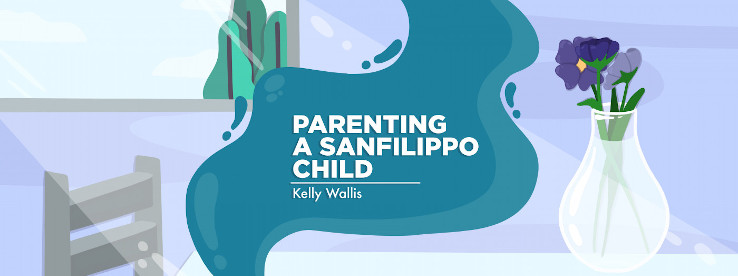Living in the Space Between Diagnosis and Death
Written by |

What bookends to live between — diagnosis and death. This is a hard place to be, no matter where you fit in — the patient, the caregiver, or a family member or friend of any of these people. No one ever wants to be here, but sometimes it’s where we end up.
After my daughter Abby was diagnosed with Sanfilippo syndrome in 2017, it took a while to get past the shock of the diagnosis. That is the last news a parent wants to hear. It verges on the unbelievable.
After the shock wore off, I moved into an acceptance phase. I would often think to myself, “This is my reality. Deal with it.”
My husband, Jeff, my other daughter, Emily, and I decided we would confront this. We wanted to face the diagnosis by doing something. We envisioned a group of family and friends that would support Abby and us as we raise awareness and funds for research and hopefully a cure one day. The result was Abby’s Alliance.
Abby’s Alliance kept us busy preparing for and hosting fundraisers. The pandemic put everything on hold for a while, but we are planning to continue hosting fundraisers and spreading awareness.
One hidden benefit we reap from Abby’s Alliance is that it keeps us busy. It gives us purpose and helps us feel like we are actively doing something. It’s constructive to have something on which to focus one’s energy. Being busy keeps the mind engaged and allows little time to think, ponder, and contemplate.
But then there’s the downtime. We need time off to rest our minds and bodies, but these periods can be depression traps.
This is the space I’m referring to in my title — the vast amount of time after a child’s diagnosis, when we have no idea when their time on earth will be done. It is a cruel, vicious waiting game that, at times, can feel like watching a train wreck in slow motion. We witness the wreck as it’s happening, but can’t do anything about it. This is my reality right now, and it sucks.
When we as caregivers and loved ones are in the midst of watching the wreck happen, we naturally try and mitigate the damage, thinking to ourselves, “What can I do to minimize the impact of this accident?” But there is very little to do. The outcome is inevitable: The wreck will happen, and loss will occur. We’re left with the moments in between impact and the final loss. What are we to do with that?
So, I find myself trying to figure out what to do within this space, and it is hard. Some days are harder than others. Breaking it down into day-to-day chunks makes it less daunting.
When Abby has a good day and seems happy, we celebrate the little moments. The harder days are when she’s unhappy, seems to be hurting, or is not sleeping well. On those days, I struggle to find good coping mechanisms that work for me. I pray about it, but I don’t always feel like I’m being heard.
I won’t quit, though. I can’t. The wreck is happening, and I have to find a way to continue existing in this world without my girl when the collision is over.
***
Note: Sanfilippo News is strictly a news and information website about the syndrome. It does not provide medical advice, diagnosis, or treatment. This content is not intended to be a substitute for professional medical advice, diagnosis, or treatment. Always seek the advice of your physician or other qualified health provider with any questions you may have regarding a medical condition. Never disregard professional medical advice or delay in seeking it because of something you have read on this website. The opinions expressed in this column are not those of Sanfilippo News or its parent company, Bionews, and are intended to spark discussion about issues pertaining to Sanfilippo syndrome.







Leave a comment
Fill in the required fields to post. Your email address will not be published.